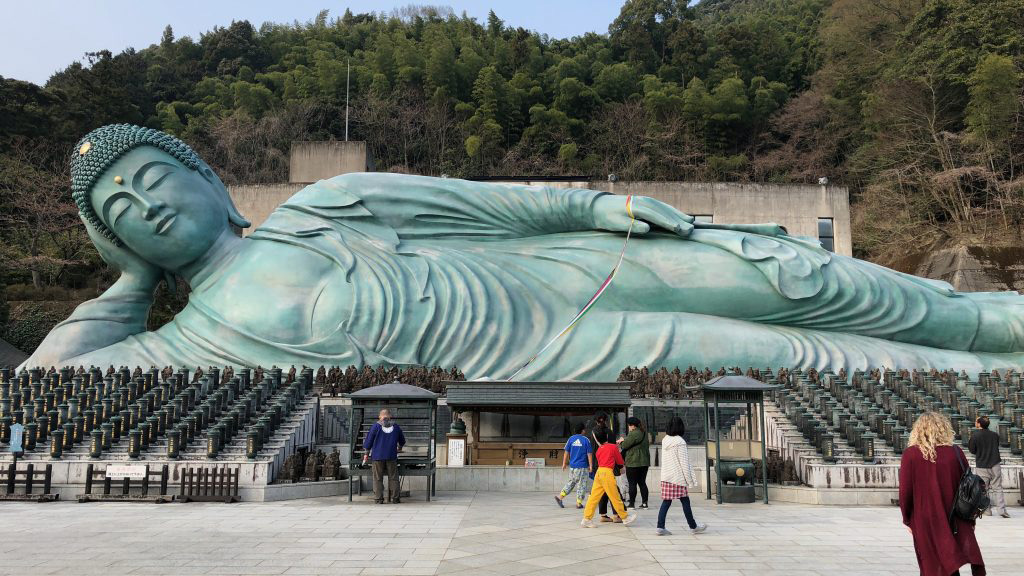I. Introduction
Reclining Buddha sculpture is a unique and fascinating form in Buddhist art. This sculpture depicts the Buddha in nirvana, or death, to symbolize his liberation from the cycle of life and death.
2. The origin and development of reclining Buddha sculpture
The origin of reclining Buddha sculpture can be traced back to India in the 2nd century BC, when artists began to try to depict the nirvana of Buddha in this form. With the spread of Buddhism, this art form has gradually spread to other regions, such as China, Japan, Thailand and other places, forming their own unique reclining Buddha sculpture styles.

3. The symbolic meaning of reclining Buddha sculpture
The reclining Buddha sculpture not only depicts the Buddha’s Nirvana, but also symbolizes the Buddha’s liberation from the cycle of life and death. The reclining Buddha’s posture is calm and serene, symbolizing the Buddha’s transcendence of life and death and the attainment of Nirvana. At the same time, the reclining Buddha sculpture also symbolizes Buddhist believers’ admiration for Buddha and yearning for Nirvana.
4. The artistic characteristics of reclining Buddha sculpture
The artistic characteristics of reclining Buddha sculpture are mainly reflected in its meticulous depiction and deep symbolic meaning. Through fine lines and delicate textures, the artists vividly depicted the Buddha’s facial expressions and body postures, allowing the viewer to feel the peace and serenity of the Buddha’s nirvana. At the same time, the symbolic meaning of reclining Buddha sculpture also makes it an important form of expression in Buddhist art.

5. Distribution of reclining Buddha sculptures around the world
Reclining Buddha sculptures are found in Buddhist temples all over the world. Among them, the sleeping Buddha sculptures in the Grand Palace in Bangkok, Thailand , China are very famous. These lying Buddha sculptures are not only treasures of Buddhist art, but also important attractions that attract tourists.
6. Conclusion
Reclining Buddha sculpture is a unique form of Buddhist art. It depicts Buddha’s Nirvana with vivid artistic techniques, symbolizing Buddha’s transcendence of life and death and the achievement of Nirvana. This not only has an important position among Buddhist believers, but also occupies an important position in world art.


